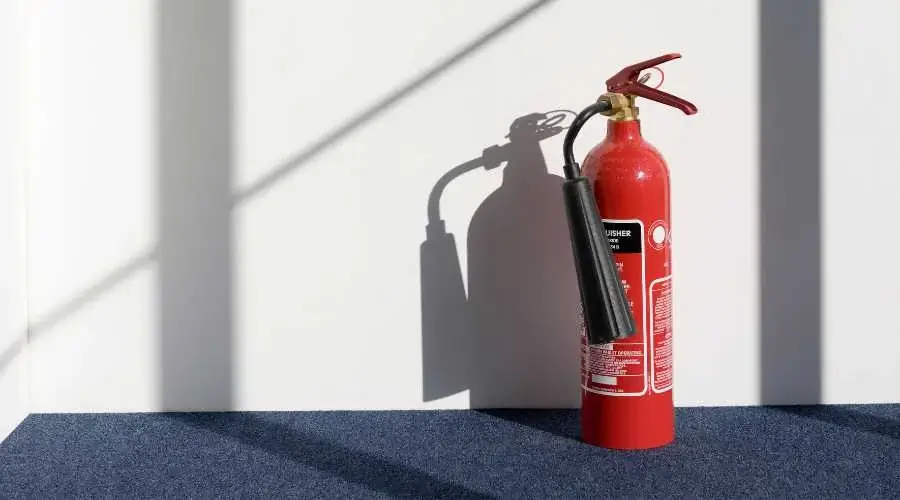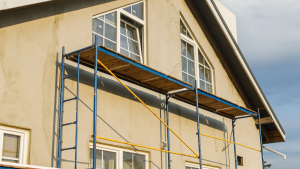In the United States, stucco is a popular home exterior material. If properly built, stucco can protect your home from a variety of risks, such as water, vermin, forceful impacts, extreme hot and cold temperatures, and even fire.
However, how well can stucco protect your home and its residents from fire? How does stucco stack up against other commonly used residential wall materials? What is the fire resistance of a well-built stucco system?
This article will answer all these worries and more, presenting a comprehensive picture of stucco’s protective capabilities.
Fire Resistance of Stucco
Because of the chemicals that make up stucco, it is a highly fire-resistant building material. The materials used are Portland cement, sand, limestone, water, and other additives. Because none of its elements are flammable or combustible, stucco is neither explosive nor combustible.
The way stucco is applied to walls also helps to avoid fires. Three layers are often used. These layers provide thickness and hence protection to the surface of the wall.
Stucco may cover a range of fire-resistant building components in addition to its inherent fire-resistance. Stucco is often used on stick-built (wood frame) constructions, although it may also cover over stone or brick. This is most often utilized when a stucco effect is desired.
Comparison to Other Siding Materials
In terms of fire protection, how does stucco compare to other common siding material alternatives?
Stucco is much more fire-resistant than vinyl, wood, or faux wood. When subjected to the high temperatures associated with fire, vinyl melts quickly and easily. Vinyl may soften when exposed to direct sunlight on a hot day.
Meanwhile, wood and imitation wood are very combustible and provide little fire protection. While vinyl will not prevent a fire from spreading, it will keep it from spreading. Wood siding is not in the same league as vinyl siding.
Stucco, stone, and brick veneer have the most in common with fiber cement siding. All of these forms of siding provide appropriate fire protection. The most typical flaws in these materials are cracks. If the surface is fractured, the fire can reach the wood within the wall more rapidly.
Stone, brick, and metal are the most fire-resistant building materials. Stone and brick differ from veneer in that they are full-thickness and give far more protection.
Stucco Fire Rating
Typically, a stucco layer is one inch thick. At least three layers of stucco will be placed on the wall to achieve this thickness. Here you can see the scratch, brown, and final coatings. While these three layers are industry standard, more are available to defend against particular, known environmental risks in the area.
Stucco has a one-hour fire rating at one-inch thickness. If the wall were to catch fire, it would take an hour for the flames to breach the wall and cause damage to the remainder of the house.
Compared to the typical length of time for contemporary and traditional dwellings, one hour is an incredible amount of time to survive a fire. On average, a modern house’s walls can be between in 3 to 5 minutes. Homes constructed 30 years ago may last an average of 15 to 17 minutes.
The one-hour fire rating of stucco is significant for two reasons. For starters, it gives you and your family more time to escape the building in the case of a fire. Second, your house will be safe until the fire brigade arrives to extinguish the flames.
Protect Your Home From Fire
Stucco is a fantastic option for a fire-resistant house façade. Because it comprises non-combustible materials, stucco is resistant to high heat and flame exposure.
Although vinyl siding is the most popular and least expensive option, it offers significantly less protection than stucco.Stone and brick, however, give the greatest level of protection but are also the most costly. Options. Stucco, like stone and brick veneers, is utilized in the center of a structure to give low-cost protection.
Stucco has a 1-hour fire rating, which implies that a fire will burn through the wall in one hour. This is a far higher fire rating than most new homes.
Even with all of the fire protection provided by stucco, it’s important to remember that the majority of home fires start on the inside. These flames will not be extinguished by stucco. It can, however, protect it against fires that originate outside your home.
CMB Wayne Stucco & EIFS
CMB Wayne Stucco & EIFS is your local stucco contractor. We’ve been in the stucco business since 1985 and have built a reputation for solid service. Reach out to us as soon as possible for a free consultation—quote on your next stucco project.


